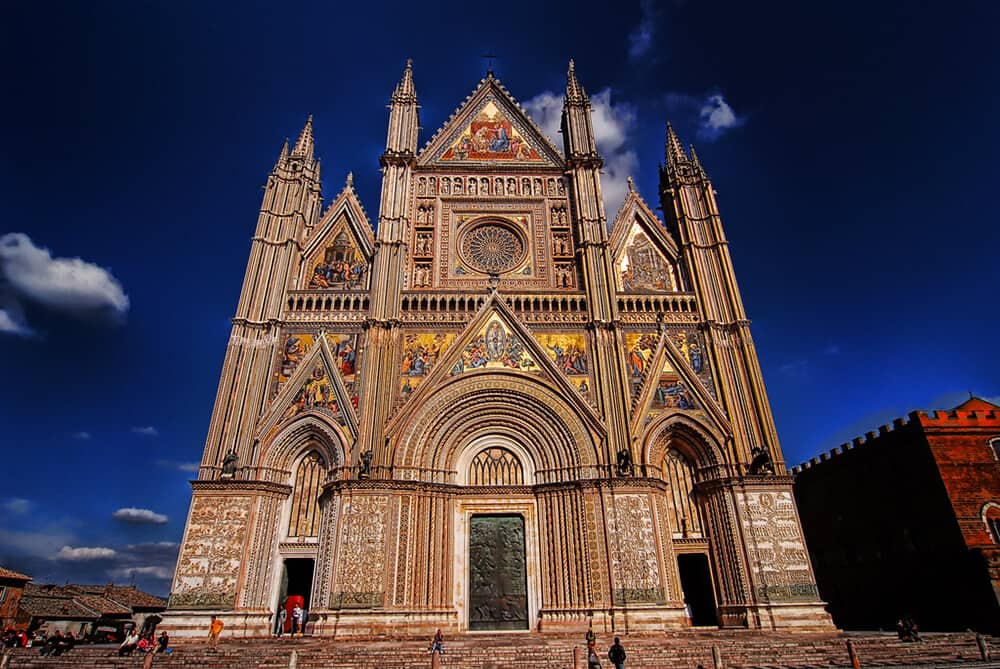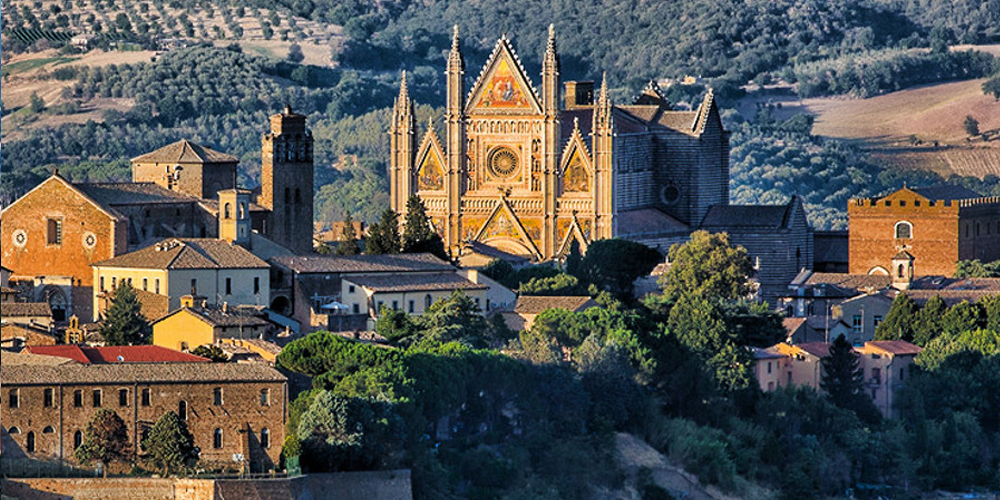Saint Patrick's well

Saint Patrick's well is next to the municipal gardens that are located today within the Albornoz fortress, from which the view sweeps over the valley and the hills surrounding the city. It was built in the 16th century to ensure water to citizens all the year round, especially in the case of disaster or prolonged siege. It was made by Pope Clement VII who found shelter in this place during the Sack of Rome in 1527. It seems that the well is linked to the legend of the Irish Saint Patrick. According to what is said, in Donegal (Ireland) there is a very deep cave that was indicated by Christ to Saint Patrick to show the pains of Hell to the faithful who had reached the bottom, obtaining in return the remission of their sins. The Saint Patrick's well goes down for over 50 metres (248 steps to reach the bottom) and it is the deepest well, that can be visited, in the world.
Orvieto in one day
Orvieto is one of the most important cities in Umbria; importance due to its beauty and its history. It is situated on top of a cliff, which dominates the surrounding space, as is usual for all the Etruscan settlements of the region. The whole city is crossed by thousands of wells, tunnels and artificial caves, that the Etruscans dug for the water supply: for example, the Saint Patrick's well, the deepest well than can be visited in the world. The city, which dates back to the 7th century BC, has a unique charm and architecture that mixes the styles of the cultures that have inhabited it over the centuries. The cathedral of Orvieto, one of the most beautiful cathedrals in Italy, was initially designed in Romanesque style, but the changes that took place over time make this cathedral one of the great wonders of Gothic style.
The Orvieto cathedral

The construction of the cathedral, that was begun in 1290, required three centuries and the succession of dozens of experts and artists. The beautiful facade by Lorenzo Maitani, of 40 metres wide and 52 metres high, stands out and it is similar to a glistening triptych with gold and mosaics. The side walls of Orvieto Cathedral, in contrast to the facade, have a much simpler decoration, consisting of alternating bands of white travertine and gray and blue basalt. The interior is embellished by two chapels frescoed by some of the greatest Italian painters of the period, for example you can admire the famous Last Judgment by Luca Signorelli. Inside the cathedral you can admire also the Reliquary of the Corporal, a masterpiece of jewelry made in 1337-1338 by the Sienese Ugolino di Vieri. This piece guards the Corporal of Bolsena, a town nearby, where during a Mass, in 1263, a consacreted host began to bleed into the Corporal.
Orvieto underground
Orvieto, as we said, stands on a cliff of calc-tufa, which supports the city for almost three thousand years. Inside this great cliff, in the '70s , was found by speleologists and archaeologists an incredible underground world that has been excavated in more than 2500 years of history by the populations that have inhabited in this city. Here arose an important Etruscan city, the ancient Velzna. The first hypogea excavated by man in search of water date back to this period. A successful search, which made this settlement self-sufficient from the point of view of water supply and, therefore, difficult to conquer. Velzna, in fact, fell into the hands of Rome in 264 BC, only after having resisted a siege that lasted more than two years.
The guided tours for the “Orvieto underground” start every day from Duomo square, right in front of the Cathedral, at different times.
Orvieto, TR
About the author
Written on 11/02/2019



Francesca Rizzi